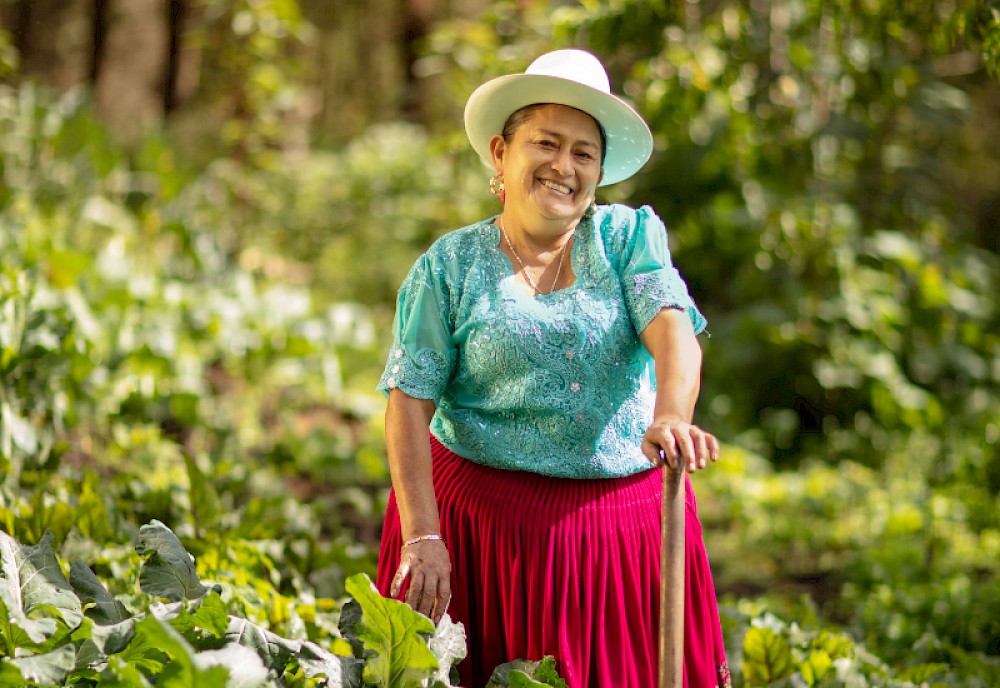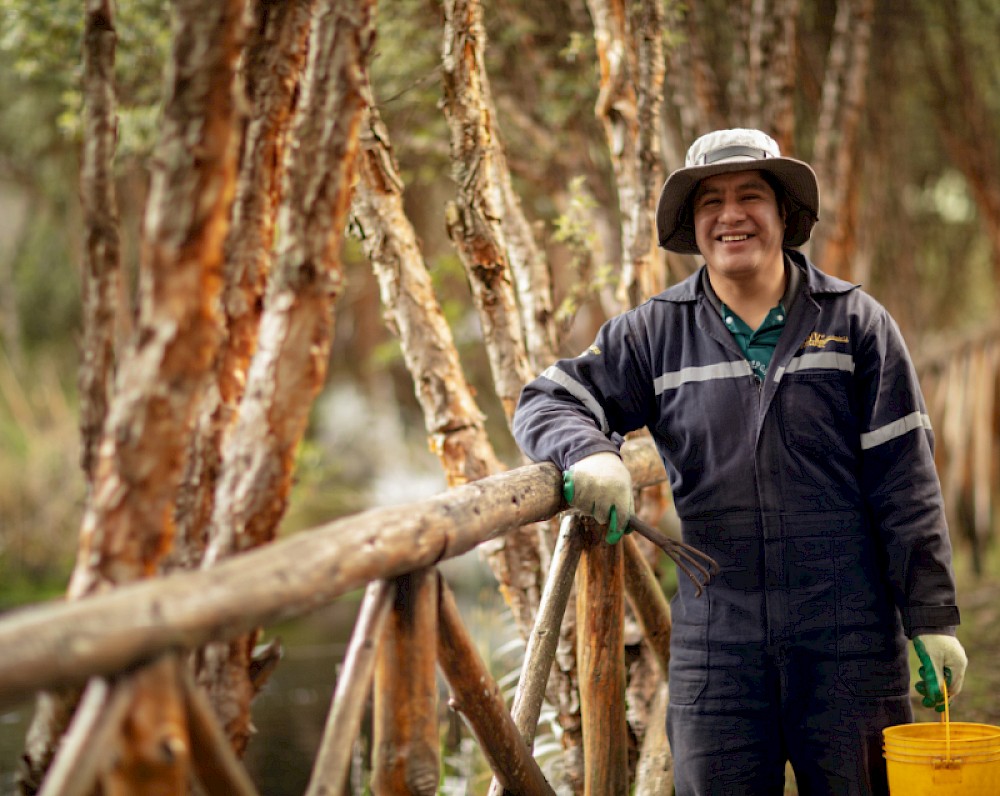Well-Aligned with DPM’s Core Strengths and Unique Capabilities to Unlock Value
| Location | Azuay province, Ecuador |
| Ownership | 100% |
| Stage | Permitting |
| Location | Azuay province, Ecuador |
| Ownership | 100% |
| Stage | Permitting |
 Sign Up
Sign Up

In 2021, DPM acquired the Loma Larga project, located in the Azuay province of Ecuador, approximately 30 kilometres southwest of the city of Cuenca.
Loma Larga is a high-quality underground development project which has similar geology, mining method and processing flowsheet as our Chelopech mine in Bulgaria, which DPM transformed into a world-class operation. With Loma Larga, we expect to leverage our proven strengths as an environmentally and socially responsible mining company to unlock the significant potential of the project for the benefit of all stakeholders.
As we advance Loma Larga, we will maintain our firm commitment to the highest standards of engagement with local communities and environmental stewardship.

Since the acquisition of the Loma Larga gold project, DPM has made significant progress in its understanding of the development and operational parameters of the project. We have incorporated certain scope changes to the project as part of an updated feasibility study aimed at enhancing the project execution and meeting DPM’s operating standards. An updated feasibility study is currently in progress and is expected to be complete in the second quarter of 2025.
We view the Loma Larga gold project as a high‐quality advanced stage project with the potential to generate strong economic returns following the results of the ongoing optimization work.

For more than 20 years, the Loma Larga mining project has been committed to the Cuenca region and the province of Azuay.
At DPM, we strive to raise industry standards toward responsible and sustainable mining, recognizing that this is the path to prosperity and comprehensive development, especially for local communities.
Our core values include human safety and well-being, environmental stewardship, transparency, respect and inclusion, innovation, and collaboration with communities.

The Loma Larga project contemplates the construction of a modern underground mine with a 12-year lifespan.
Committed to the growth of Cuenca and Azuay, we seek a harmonious coexistence with the natural environment and communities. Our goal is to drive positive change through the responsible management of natural resources and the conscious use of water, reflecting our commitment to community and national well-being.
• Construction: 2 years.
• Operation: 12 years.
• Closure: 2 years.
• Post-closure monitoring: 10 years for the tailings dam and 5 years for other facilities.

At the Loma Larga project, we practice ethical and responsible mining, transforming resources into shared value. Through ongoing programs with the State, local governments, and community leaders, we promote a prosperous and equitable future, ensuring opportunities for growth and development for all.
Quarterly environmental monitoring and reporting to regulators and authorities
Establishment of the agroforestry station and sanctuary of wild life "Vicente Jaramillo Ochoa" to support the reforestation of areas affected by fires and shelter rescued native species
Over 100,000 trees and shrubs provided by our on-site nursery for re-vegetation
Four mining information centres in the communities
Partnership with 14 national and international universities
Veterinary assistance to over 100 ranchers
Estudio de Impacto Ambiental del Área Operativa del Proyecto Minero Loma Larga
According to the Investment Agreement signed with the Ecuadorian State, DPM Ecuador will invest a total of USD 419,000,000 in the country.
Employment contracts will be divided into two phases:
80% of the hires will be local.
Since 2021, a robust Corporate Social Responsibility (CSR) program has been implemented in Ecuador, collaborating with parish Governments (GADs) to promote community development in areas such as health, infrastructure, culture, education, and production. In addition, 100% of the community in the area of direct social influence has been informed about the development of the Loma Larga Mining Project.
DPM Ecuador is investing in the social advocacy communities of Loma Larga, focusing on five key areas: health, infrastructure, culture, education and production. These investments are made in coordination with authorities and community leaders, following local Land Use Plans.
By 2025, investment is focused on strengthening education, culture and sports with initiatives such as:
Since July 2025, through our Continuing Education Program (PEC), more than 400 technical certifications in mechanics, welding, construction and electricity have been offered, in collaboration with SECAP and CIMA of the Universidad Técnica Particular de Loja.
No. During the development of this process, the Constitutional Court of Ecuador issued an opinion clarifying that the results of the Popular Consultations will have effects only in the future and will not modify previous legal situations. In this context, the Loma Larga mining title, granted in 2001, which authorizes all phases of mining activity (prospecting, exploration, exploitation and closure), remains intact. Since the consultation is not retroactive, it does not affect or limit the rights acquired under that title, in accordance with the principle of legal certainty.
Yes. The Ministry of Environment, Water and Ecological Transition (MAATE), as the competent entity for the development of environmental consultations in strategic projects in Ecuador, carried out the process in accordance with national environmental regulations and current international standards. This process included the participation of the inhabitants of the area of direct social influence of the Loma Larga Mining Project (PMLL), as defined in the Environmental Impact Study. The communities involved were: Cristal Aguarongos Community (Girón Canton), Chumblín Sombrederas Commune (San Fernando Canton) and Duraznos Community (Victoria del Portete Parish, Cuenca).
Yes. In January 2025, the Ministry of Energy and Mines, as the competent entity to carry out the Prior, Free and Informed Consultation in Ecuador, concluded the process in the Community of Escaleras, located in the parishes of Victoria del Portete and Tarqui. This process was carried out in accordance with the comprehensive reparation measures ruled in August 2023 by the Specialized Civil and Commercial Chamber of the Provincial Court of Justice of Azuay.
The enjoyment of the fundamental rights guaranteed by the Constitution of Ecuador cannot be denied due to the lack of issuance of a specific law. In this context, while the legislation on Prior Consultation is being enacted, the process was developed by applying Article 57, paragraph 7 of the Constitution, together with the standards established in Convention 169 of the International Labor Organization (ILO). This ensures that the rights of communities are respected and protected, even in the absence of specific legislation.
Yes. In October 2024, the Ministry of Environment, Water and Ecological Transition (MAATE) issued a water report on the sustainability of the Quimsacocha Recreation Area and the Cuenca water recharge zone in relation to the Loma Larga Project. The report's conclusions were as follows:
Although the Ministry of Environment, Water and Ecological Transition (MAATE) was requested to carry out the hydrological report in collaboration with the municipal company ETAPA EP, this was not carried out due to the lack of coordination between the entities.
Legally, MAATE is the entity responsible for developing and submitting the report to the judicial authority, since it is the only competent authority in terms of the protection, conservation and sustainable use of the environment and natural resources.
Given the concern that the Quimsacocha Recreation Area could have undergone changes due to the exploration activities of the Loma Larga Mining Project (PMLL), the report of the Ministry of Environment, Water and Ecological Transition (MAATE) showed that the area is in a good state of conservation, and that its ecosystems maintain their functionality and biodiversity characteristics.
No. Although the deposit is located within the water recharge zone of the Canton of Cuenca, in the upper area of the Victoria del Portete parish, it will not use water from these basins.
DPM ECUADOR S.A. is authorized to use water from the Crystal Alumbre Gorge that feeds the Jubones Basin with a flow of up to 8 L/s. The project is designed with environmental sensitivity, incorporating advanced technology and engineering solutions based on technical studies. Strict controls will be implemented to minimize environmental impacts, guaranteeing a sustainable operation, without altering or polluting the waters of the Jubones Basin.
No. The waste generated in the extraction of the Loma Larga deposit will be managed as follows: 50% will be deposited in the tailings dam and the other 50% will be returned to the underground mine after extracting gold, silver and copper. The type of tailings intended for the tailings, known as filtered tailings, will have a humidity of less than 80%. This type of tailings is compact and allows you to create a solid and stable base, similar to that used in road construction. It will not be a liquid deposit.
The remaining waste from mining activity (tailings) will not contain additional elements to those they already possess naturally. Basically, the ore will be repositioned from depth to the surface.
To avoid changes in their chemical composition due to contact with oxygen and water, they will be encapsulated using geomembranes, which are resistant materials that prevent leakage, as the tailings dam is formed by blocks.
The tailings dam will be developed gradually over the 12-year life of the mine. At the end, it will become a new formation similar to a hill, whose upper part will be covered with a layer of vegetation and natural soil, capable of hosting flora and fauna.
The use of chemicals, such as mercury, is prohibited by Ecuadorian law, and is used only for the amalgamation of the metal. In the case of Loma Larga, the material will not be processed in the area or within the country. To separate the gold from the rock with little mineral interest, biodegradable flocculants will be used. This method allows minerals to be separated into spin capsules, similar to how a household washing machine works. The water used in this process can be purified and reused multiple times, similar to water treatment plants that supply water to homes.
No. Although the Loma Larga deposit is located 6 km (on foot) from Quimsacocha, it cannot affect the lagoons for three reasons: